A brief history of Cyprus
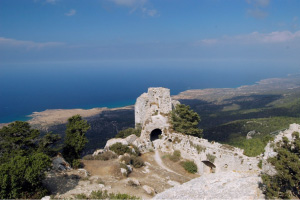 St. Hilarion and Buffavento Castles protect the routes through the mountain from Kyrenia to Nicosia. St Hilarion was a strategic position occupied by Turkish Cypriot fighters and the site of a battle on 25 April 1964, when Greek Cypriots tried to storm the castle, eventually halted by UN action. Again, in July 1974, Turkish Cypriot fighters guarded St Hilarion until the Turkish troops joined up with them.
St. Hilarion and Buffavento Castles protect the routes through the mountain from Kyrenia to Nicosia. St Hilarion was a strategic position occupied by Turkish Cypriot fighters and the site of a battle on 25 April 1964, when Greek Cypriots tried to storm the castle, eventually halted by UN action. Again, in July 1974, Turkish Cypriot fighters guarded St Hilarion until the Turkish troops joined up with them.
The landing of 6,000 Turkish troops on 20th July 1974 was on a beach near Alsancak, now called Escape beach and marked with a monument.
Greeks have inhabited Cyprus since 500BC. Turks have inhabited it since it became part of the Ottoman Empire in 1571.
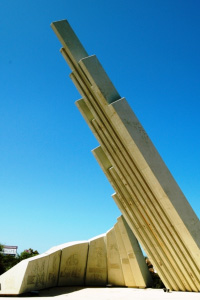 In 58BC Cyprus was annexed to Rome and in 43AD Christians came to Cyprus. In 330AD the island became part of the Eastern Roman or Byzantine Empire.
In 58BC Cyprus was annexed to Rome and in 43AD Christians came to Cyprus. In 330AD the island became part of the Eastern Roman or Byzantine Empire.
In 1191 Cyprus was conquered by Richard the Lionheart who was going to the Holy Land to fight the third Crusade. A year later Richard sold the island to Knights Templar but they returned it back to Richard who sold it for the second time to the French nobleman Guy de Lusignan. The Lusignan density ruled the island for the next 300 years.
In 1489 the Lusignan King James died leaving the Kingdom to his Venetian wife who abdicated giving Cyprus to Venice.
In 1571 the Ottomans arrived in Cyprus and take Famagusta and Cyprus becomes a part of the Ottoman Empire and instated the Orthodox Church as the Church of Cyprus. The population had to choose between Orthodox and Islam as Catholic religion was prohibited by the Ottomans. The majority chose Orthodox religion but the result was that the population began to take on the ethnic structure which Cyprus still possesses today, namely Greek and Turkish.
1572-1668 twenty eight bloody uprisings, 1625-1700 great depopulation of Cyprus. The plague wipes out over half of the population. 1821 Greek Cypriots side with Greece in a revolt against Turkish rule. The island’s leading churchmen are executed as punishment. 20,000 Christians flee the island.
Following the Ottoman Empires defeat in World War I, Cyprus was annexed by Britain in 1925 and made a Crown Colony.
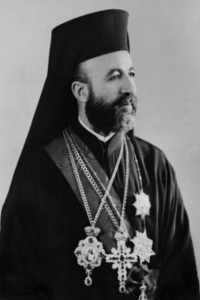 In 1931 came the first serious riots of Greek Cypriots demanding Enosis, (Union of the island with Greece). The Government House in Nicosia was burned down and martial law was declared and the legislative council abolished. The display of the Greek flag and the Greek National anthem were banned. In 1939 Greek Cypriots fight with the British in World War II, but remain set on Enosis after the war is over. The Turkish Cypriots, however want the British rule to continue.
In 1931 came the first serious riots of Greek Cypriots demanding Enosis, (Union of the island with Greece). The Government House in Nicosia was burned down and martial law was declared and the legislative council abolished. The display of the Greek flag and the Greek National anthem were banned. In 1939 Greek Cypriots fight with the British in World War II, but remain set on Enosis after the war is over. The Turkish Cypriots, however want the British rule to continue.
In 1950 Archbishop Makarios III is elected political and spiritual leader, and becomes the head of the autocephalous Cypriot Orthodox Church and heads the campaign for Enosis supported by Greece.
In 1955 a series of bomb attacks starts a violent campaign for Enosis by EOKA (National Organisation of Cypriot Fighters) created by Greek Cypriots led by George Grivas, an ex-colonel in Greek army, born in Cyprus. Grivas takes the name of Dighenis, a legendary Cypriot hero and conducts guerrilla warfare from a secret hideout in the Troodos Mountains. He is estimated to have 300 men, yet successfully plagues 20,000 British troops and 4,500 police. They targeted mainly British but also Turkish Cypriots and leftist Greeks on a smaller scale, in a campaign of violence to perform Enosis. In 1956 Britain deports Makarios to the Seychelles in attempt to quell the revolt. Turkish Cypriots are used as auxiliaries of British Security Forces, and become one of the major targets of the EOKA.
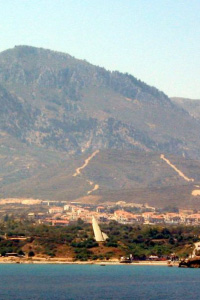 In 1957 Field Marshal Sir John Harding is replaced by the civilian governor Sir Hugh Foot in a conciliatory move. In 1958 Turkish Cypriots are alarmed by British conciliation and begin demands for partition. There are inter-communal clashes and attacks on British.
In 1957 Field Marshal Sir John Harding is replaced by the civilian governor Sir Hugh Foot in a conciliatory move. In 1958 Turkish Cypriots are alarmed by British conciliation and begin demands for partition. There are inter-communal clashes and attacks on British.
The EOKA campaign did not result union with Greece but rather an independent republic, The Republic of Cyprus, with two communal chambers in 1960 following the Treaty of Zurich. Independence was given by Britain to Cyprus, under a constitution that gave Cyprus a Greek Cypriot president and a Turkish Cypriot vice-president. The vice-president later stated that in the following 14 years he only met the president once. The relationship between the two communities deteriorated until on 15 July 1974 there was a Greek coup which ousted the president and then on 20 July 1974 Turkish troops landed in Cyprus to support and protect the Turkish Cypriots and the island is divided.
The Northern part of the island (34% of the land area) was declared the Turkish Republic of Northern Cyprus in 1983. In Nov 2002 the UN published a proposal for a settlement between the Turkish and the Greek communities. In April 2003 the border between Northern and Southern Cyprus was opened. The election on 14 Dec 2003 resulted in a parliament split equally between those for and those against the UN plan for the creation of a confederation of North and South Cyprus.
On 24 April 2004, separate referenda in North and in South Cyprus on this “Annan Plan” resulted in 64.9% of the North Cyprus electorate voting in favour of the plan, but 75.8% of the South Cyprus electorate rejecting the plan. On 1 May 2004, South Cyprus joined the European Union alone, leaving the TRNC isolated and embargoed from the rest of the world accept Turkey.
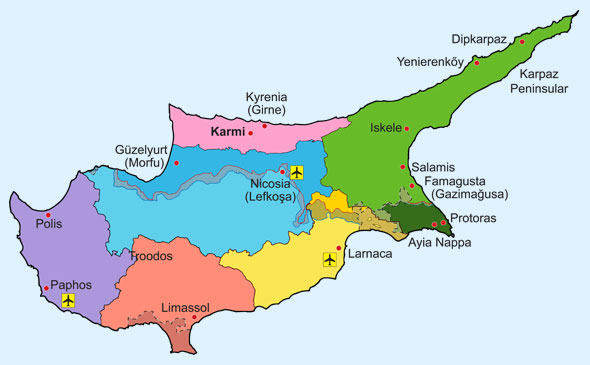
What the papers say…
The North is the best of Cyprus, their stretch of coastline is beautiful…
(The Sunday Express)
Cyprus Guide
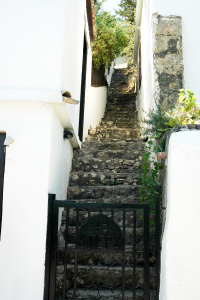 Northern Cyprus is a place of magic, fully deserving the title of ‘Pearl of the Mediterranean’. It is a rich and colourful tapestry of unspoilt natural beauty, ranging from sparkling crystal clear waters and golden beaches to fields carpeted by wild flowers in the spring and the pine clad heights of the Besparmak Mountains (Five Fingers). For centuries Cyprus has been influenced by the cultures of many different Nations which has led to an island with rich and diverse historical and architectural heritage. Soli and Vouni in the west side, the Arabahmet Pasha Mosque in Nicosia is a fine example of Ottoman architecture, from Salamis and the site of Apostolos Andreas in the East there is much to reflect 9,000 years of civilisation.
Northern Cyprus is a place of magic, fully deserving the title of ‘Pearl of the Mediterranean’. It is a rich and colourful tapestry of unspoilt natural beauty, ranging from sparkling crystal clear waters and golden beaches to fields carpeted by wild flowers in the spring and the pine clad heights of the Besparmak Mountains (Five Fingers). For centuries Cyprus has been influenced by the cultures of many different Nations which has led to an island with rich and diverse historical and architectural heritage. Soli and Vouni in the west side, the Arabahmet Pasha Mosque in Nicosia is a fine example of Ottoman architecture, from Salamis and the site of Apostolos Andreas in the East there is much to reflect 9,000 years of civilisation.
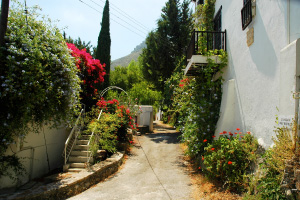 The clearest influences today are those of the British colonial era, from the 19th century to 1960, which makes for a smooth transition and warm welcome for U.K visitors and residents. English is widely spoken and familiar practices extend as far as driving on the left and even the use of three – pin plugs.
The clearest influences today are those of the British colonial era, from the 19th century to 1960, which makes for a smooth transition and warm welcome for U.K visitors and residents. English is widely spoken and familiar practices extend as far as driving on the left and even the use of three – pin plugs.
Known for its long, hot summers and its mild, short winters, Northern Cyprus promotes a relaxed way of life. Outdoor pursuits thrive in the 300-plus days of sunshine each year, and the sea temperature rarely drops below 16°C. In high summer, daytime temperatures rise to 30°C and more, and balmy evenings lend themselves to leisurely dinners.
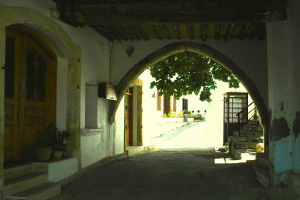 The Turkish Republic of Northern Cyprus (TRNC) has its own weekly English-language newspaper, Cyprus Today published every Thursday for more than nine years, the paper offers a digest of local and international news and sport, forthcoming events, useful information and a wide range of advertising from bars, restaurants and other businesses.
The Turkish Republic of Northern Cyprus (TRNC) has its own weekly English-language newspaper, Cyprus Today published every Thursday for more than nine years, the paper offers a digest of local and international news and sport, forthcoming events, useful information and a wide range of advertising from bars, restaurants and other businesses.
Well-known imported brands are among the range of consumer goods to be found alongside local items and fresh produce in Northern Cyprus’s corner shops and supermarkets. Particularly popular are the selection of low-cost wines and spirits, such as ‘Cyprus Brandy’ at just £2.50 a bottle!, a good three course meal for two, including drinks, will cost you about £25.
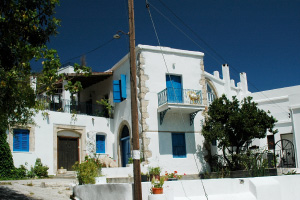 Foreign currencies can be changed for Turkish Lira at banks and Currency Exchanges across the country, although sterling is accepted in most places. Education standards in the TRNC are generally high, and the country has several international universities. Bi-lingual education is available in many places, from infant through to university level.
Foreign currencies can be changed for Turkish Lira at banks and Currency Exchanges across the country, although sterling is accepted in most places. Education standards in the TRNC are generally high, and the country has several international universities. Bi-lingual education is available in many places, from infant through to university level.
Accident and emergency facilities are available through hospitals across the TRNC. Routine medical care may be provided efficiently by private practitioners, at much lower costs than in the UK. Most medicines including antibiotics can be bought freely over the counter.



